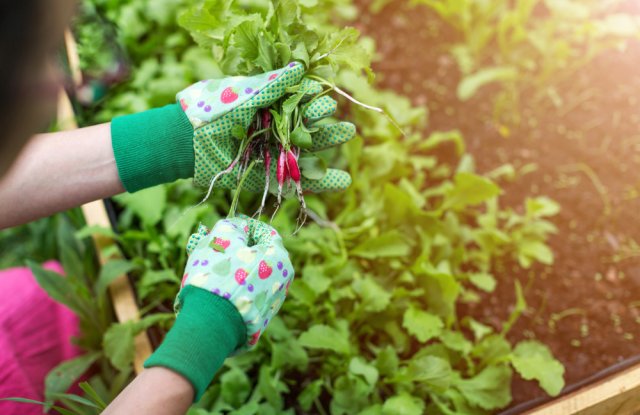Beetroot is easy to grow, but if agricultural practices are not followed, the leaves may turn red. Such crops lag behind in growth and develop incorrectly.
Let us note right away that reddening of beet leaves is not always a sign of any disease. In some varieties (Sugar и Vinous) the tops turn red as a result of frequent and abundant watering. Usually such vegetables are stored poorly, but this reddening does not affect the quality and quantity of the harvest. Therefore, if the plant develops normally, there is nothing to worry about. But if there is a lag in growth, you need to identify the cause as soon as possible and eliminate it.
Reason 1: Acidic soil
This is the most common reason for beet tops turning red. The crop prefers soils with neutral acidity, so before sowing seeds, acidic soil should be limed (watered with a thoroughly mixed ash solution – 2-3 glasses of wood ash per 10 liters of water). And in the fall, when digging, it is recommended to add chalk or dolomite flour to the soil (450-500 g per 1 sq.m).
Reason 2: nutritional deficiency
Reddening of beet tops can be caused by a lack of phosphorus, potassium, magnesium, manganese or sodium. Thus, with a deficiency phosphorus The above-ground part of the plant first acquires a dark green color, and after some time turns red.
With shortage potassium The tops also become dark red (especially at the edges), and in severe cases, they become diseased and dry out. This disease is often called edge-leaf necrosis.
With a lack magnesium the tops turn brown and curl upwards, deficiency manganese и sodium also leads to reddening of the cut part of the plant.
Regular fertilizing will help to replenish the missing elements in the soil. To eliminate the deficiency of magnesium and manganese, it is recommended to use a solution of liquid manure (1:10) or chicken manure (1:20). In this case, the fertilizer consumption is 1 liter per 1 linear meter.
Also useful for beets is fertilizing with lime and potassium: 10 g of lime and 200 g of potassium chloride are dissolved in 80 liters of water, everything is thoroughly mixed and the plants are watered every 14 days at the rate of 1 liter of solution per 1 running meter. Fertilizing is stopped when signs of nutrient deficiency disappear.
To eliminate sodium deficiency, add table salt to the water for irrigation (at the rate of 1 tbsp. per 10 l of water). And the lack of phosphorus is compensated with superphosphate at a dosage of 30-40 g per 1 sq.m.
Please note: if there is an excess of macro- and microelements, beet leaves may also turn red. Therefore, correctly observe the dosages of the applied fertilizers.
Reason 3: Cercospora leaf spot of beets
This problem is more difficult to deal with than the previous ones. If the beet leaves not only turned red, but also have a border on their edges, and the entire leaf blade is covered with brown-burgundy dry spots, in place of which holes are formed, then the plant has been attacked by a fungal disease – cercospora.
This disease affects both sugar and fodder beets. It most often appears in the second half of summer in wet weather. The fungus can reduce the harvest by almost half. Therefore, it is important to start treatment on time and not forget about preventive measures.
Before sowing, treat the seeds in a solution of potassium permanganate. After the emergence of shoots, spray the plantings with any fungicide 3-4 times during the growing season, and once every 10-14 days, carry out treatments with copper-containing preparations (for example, a 1% solution of copper sulfate).
In addition, promptly remove damaged and dried leaves from the bed. The plantings should be well ventilated. In hot and dry weather, water the plants generously and loosen the soil around them.
Careful care of beets is the key to healthy tops and tasty root vegetables. To properly care for the plants and prevent the leaves from changing color, use our advice from the previous article.











